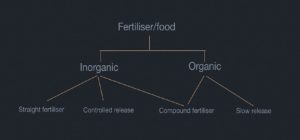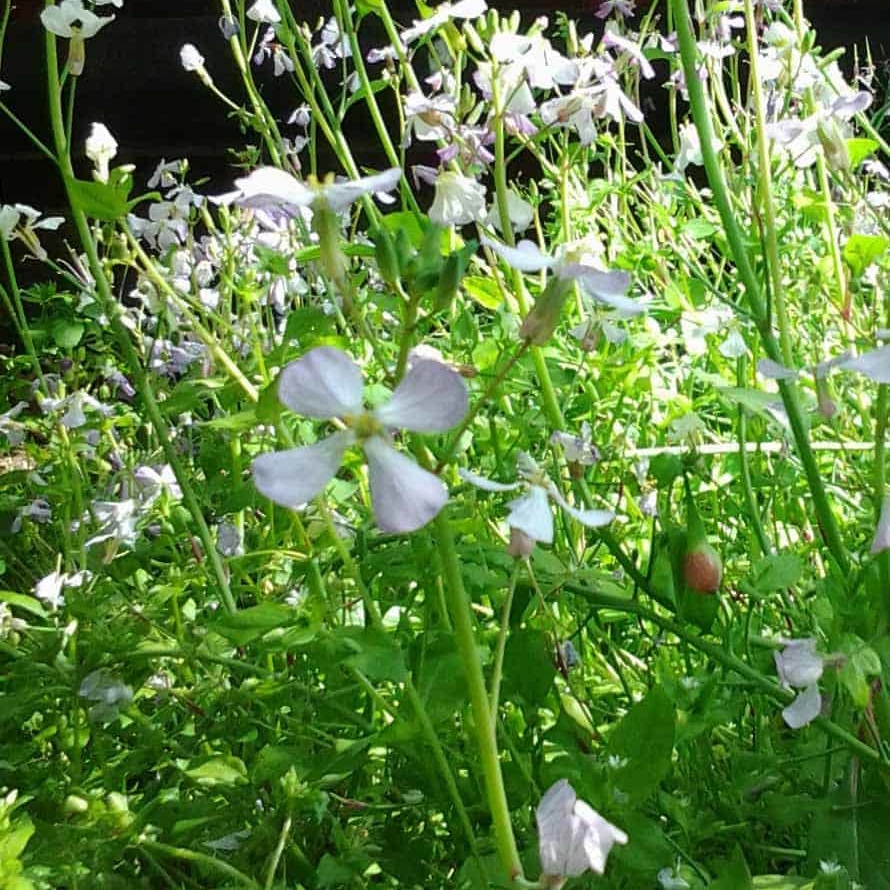Feeding your plants may not always be necessary, but it’s good practice to get into. A lot of problems which arise with plants can be reduced or resolved through use of plant food. Unlike organic mulch which feeds the soil, plant food (a.k.a. fertiliser) is a concentrated source of the main nutrients required by plants.
To feed or not to feed?
First and foremost, keep an eye out for signs of nutrient deficiency such as yellowing leaves, stunted growth or reduced flowering and/or fruiting.
However, as with human diseases, prevention is better than the cure. Feeding from early on can avoid many of the issues arising from nutrient deficiency. Plants in open ground can generally fend well for themselves once established. Their roots delve deep and spread far in the hunt for water and nutrients.
Plants in pots, on the other hand, start with only the nutrients we include in the container. Even if we add plant food at the beginning, these are finite and we must replace them once lost.
Fast-growing plants may also benefit from regular applications of fertiliser as they use up nutrients more quickly. This includes vegetable crops and fruit trees and shrubs.
Key nutrients
The three main plant nutrients all fertilisers include are nitrogen, phosphorus and potassium.
- N – nitrogen – supports leafy green growth
- P – phosphorus – for healthy development of roots and shoots
- K – potassium – used in flowering, fruiting and general plant hardiness
All UK fertilisers must indicate the ratio of these major nutrients on the packaging in the format N:P:K (for example, Bayer Garden Toprose is 5:6:12). Other micronutrients such as magnesium are vital to a healthy plant, but not all products contain these.
Application
Always follow the product instructions as to how to apply the food. It can be tempting to apply more fertiliser than instructed, but this can be counterproductive. Too much can scorch foliage. An excess of potassium will have a negative effect by inhibiting magnesium absorption and thus causing magnesium deficiency.
Always make sure the soil around a plant is moist when applying plant food, or else it won’t have any effect. Similarly, compacted soil will reduce fertiliser efficiency by limiting its movement down to the roots.
There are four main methods of application for fertilisers which must be adhered to:
- Top dressing: apply the fertiliser to the surface of the soil, normally in spring
- Base dressing: mix the food into the soil or potting compost before planting up
- Water on: drizzle liquids or soluble formulas onto roots – but not leaves – during growth for a quick boost
- Foliar feeding: apply dilute fertiliser solution directly onto the leaves
Types of fertiliser
The diagram below demonstrates the main divisions of plant food.
Straight fertilisers focus on just one vital nutrient. Controlled release fertilisers are coated to allow steady leakage of the nutrients. Compound fertilisers are balanced or only slightly unbalanced in ratio. Slow release fertilisers are always organic and due to this, they are broken down and taken up by plants gradually.
The choice is yours as to whether you opt for organic or inorganic food; the latter is faster acting and more concentrated than the former.
Kevin Gelder
Kevin joined Bestall & Co in late 2017 and brought a range of skills with him from a varied background. He gained a degree in French and Italian from Lancaster University in 2009 before successfully completing a PGCE at the University of Sheffield in 2011. He built on his communication skills through secondary language teaching, before working in healthcare administration.
Ultimately though it was his passion for plants and gardening which brought him to Bestall & Co as a member of the planting team, and although he's now moved back to an office based role, the articles he wrote whilst he was still with us live on.




